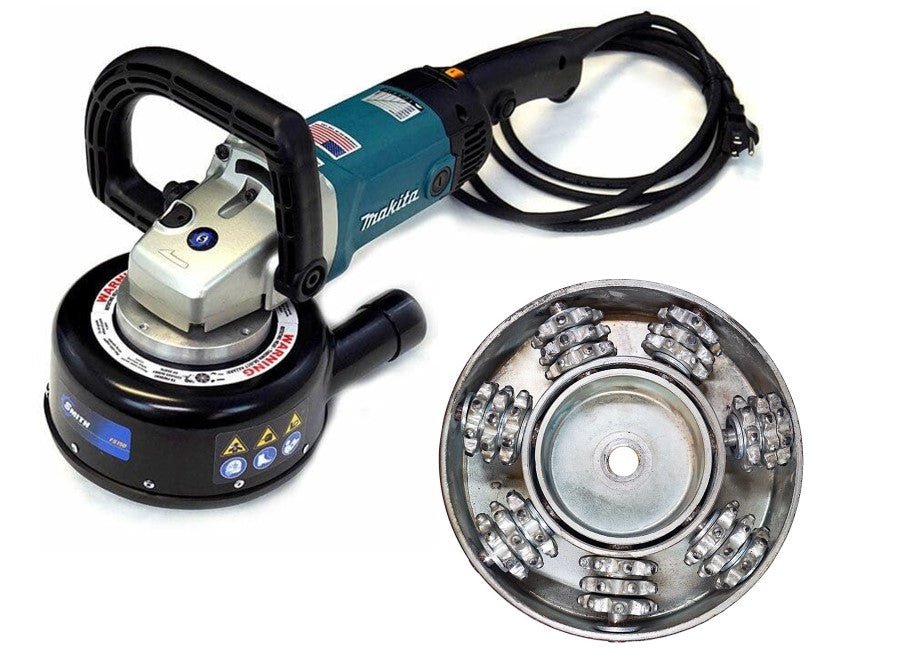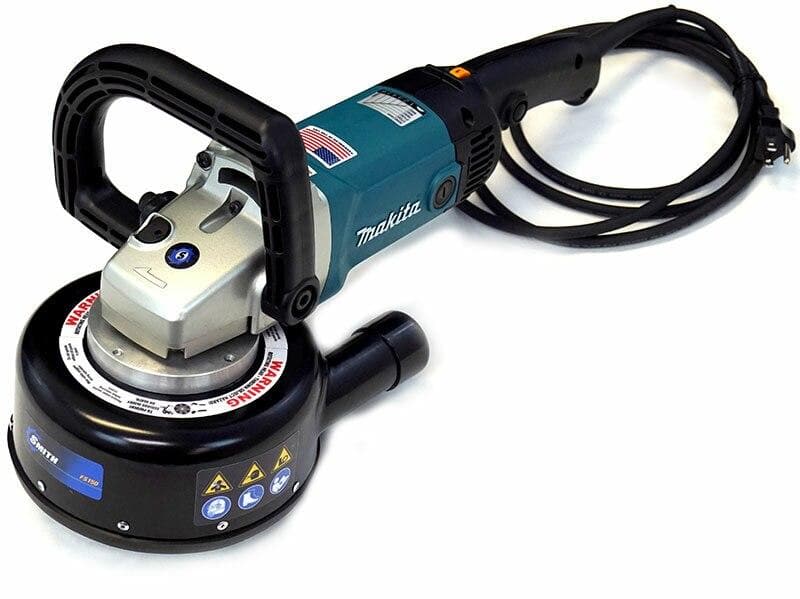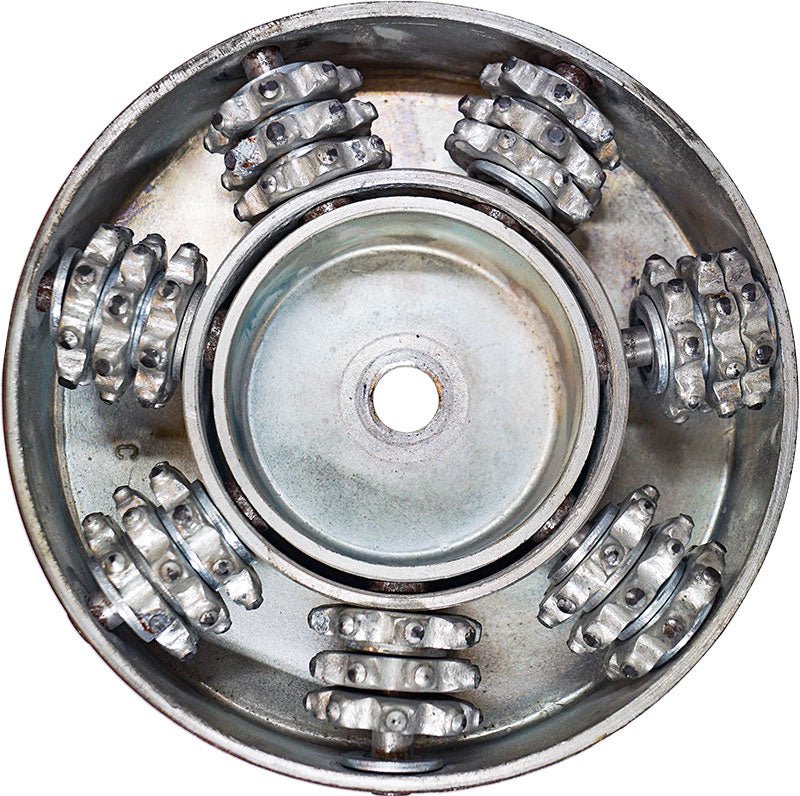The surface profile (SP) chart is used as a visual representation of desired surface textures, roughness, and general appearance on concrete or asphalt. Each profile has a corresponding number, ranging from SP1 (nearly flat) to SP10 (extremely rough).
Drum Options
The surface profile is defined as the measurement of the average distance from the peaks of the surface to the valleys, as seen through a cross-section of the prepared surface.
The texture and appearance of the profile obtained through the surface-preparation process will vary, depending upon the concrete/asphalt strength, composition, aggregate and finish. On sound surfaces, the range of variation can be controlled to represent these standards, however, as removal depth increases, the profile of the prepared substrate will be increasingly dominant by the type and size of the coarse aggregate.
Confirmation that the desired profile has been achieved during the surface-preparation process is done by visually inspecting the surface, then comparing it to the profiles depicted by replica profile tiles, replica putty, replica tape, or SP photos (see below). The replica putty test is ASTM D7682, and the replica tape test is ASTM D4417.
The creation of a surface profile can be accomplished with a variety of tools, equipment and materials, and requires a specification to select the desired SP range, dependent upon the type of overlay system and material thickness to be installed
Asphalt Profiles










Concrete Profiles

















